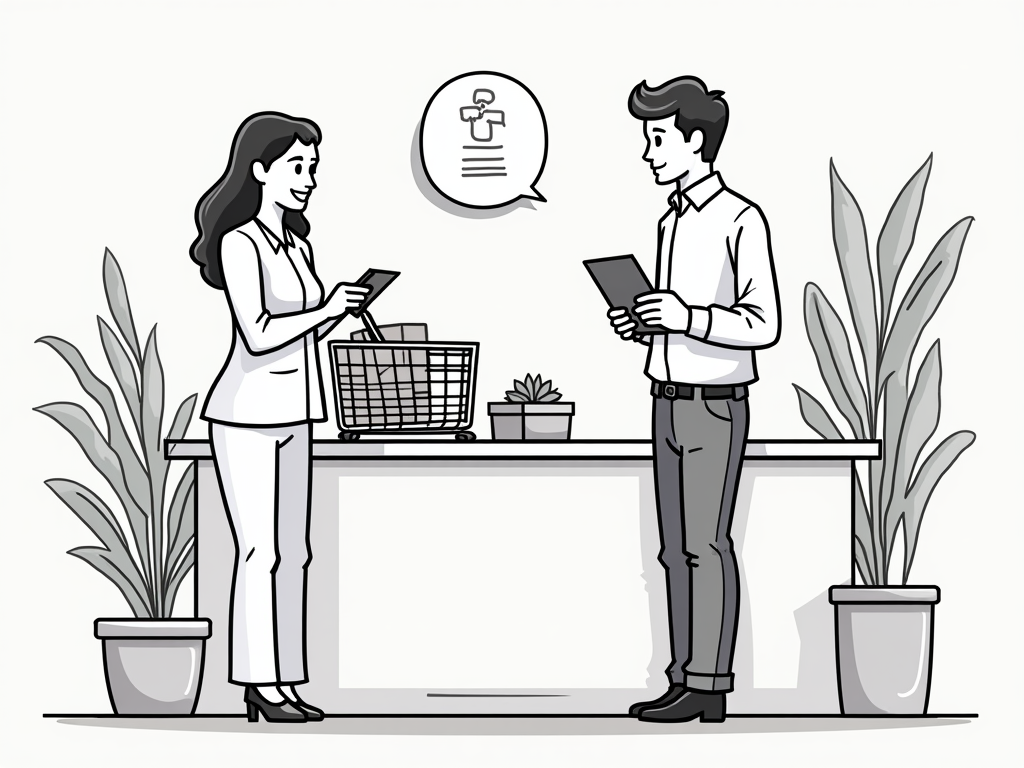
VAT for E-Commerce in Estonia: The Definitive Guide to Charging and Reporting
Reading time: 12 minutes
Table of Contents
- Introduction to Estonian VAT for E-Commerce
- VAT Basics in Estonia
- VAT Registration Requirements
- Charging VAT on E-Commerce Sales
- VAT Reporting and Submission Procedures
- Managing Cross-Border E-Commerce VAT
- Special VAT Schemes for E-Commerce
- Ensuring VAT Compliance
- Conclusion
- Frequently Asked Questions
Introduction to Estonian VAT for E-Commerce
Ever felt like you’re navigating a complex maze when dealing with Estonian VAT for your online business? You’re not alone. The intersection of digital commerce and tax regulations creates a unique landscape that requires both strategic thinking and technical knowledge.
Estonia has positioned itself as a digital pioneer with its e-Residency program and business-friendly environment, but that doesn’t exempt online sellers from VAT obligations. In fact, Estonia’s digital infrastructure makes tax compliance simultaneously more accessible and more nuanced.
Here’s the straight talk: Mastering Estonian VAT for e-commerce isn’t about perfect understanding from day one—it’s about developing a systematic approach that grows with your business while minimizing compliance risks.
This guide transforms complexity into practical steps, whether you’re drop-shipping physical products, selling digital services, or running a marketplace connecting buyers and sellers across Europe.
VAT Basics in Estonia
Before diving into e-commerce specifics, let’s establish a foundation. Value Added Tax (VAT) in Estonia follows the European Union framework with some country-specific characteristics.
Estonian VAT Rates
Estonia maintains several VAT rates that apply to different categories of goods and services:
- Standard rate: 20% – Applies to most goods and services
- Reduced rate: 9% – Applies to books, periodicals, pharmaceuticals, and accommodation services
- Zero rate: 0% – Applies to exports outside the EU and certain intra-EU supplies
What makes this particularly relevant for e-commerce businesses is that the application of these rates depends not just on what you sell, but to whom and from where you’re selling.
“The most common mistake I see with e-commerce businesses is assuming physical presence determines VAT obligations,” notes Liisa Kuuskmaa, tax advisor at Grant Thornton Baltic. “In reality, your VAT liability can be triggered by digital presence and sales thresholds regardless of your physical location.”
How VAT Works in E-Commerce Transactions
The essence of VAT is that it’s a consumption tax ultimately paid by the end consumer. However, in e-commerce, determining the correct place of supply and applicable rate becomes critical.
Let’s consider a practical example: TechEst, an Estonian e-commerce company selling software subscriptions. When they sell to:
- Estonian consumers: They charge 20% Estonian VAT
- Business customers in the EU with a valid VAT number: They can apply the reverse charge mechanism (0% VAT)
- EU consumers in other member states: They potentially need to charge VAT at the rate applicable in the customer’s country
- Customers outside the EU: This generally qualifies as an export (0% VAT)
This illustrates how the same product can have different VAT treatments depending on customer location and status—a fundamental concept for e-commerce operators to grasp.
VAT Registration Requirements
Knowing when to register for VAT is crucial for maintaining compliance while avoiding unnecessary administrative burden.
Domestic VAT Registration Thresholds
In Estonia, businesses must register for VAT when their taxable supplies exceed €40,000 in a calendar year. For e-commerce businesses, this includes all taxable sales to Estonian customers.
But here’s a strategic consideration: Even if you’re below the threshold, voluntary registration might be advantageous if:
- You make significant purchases with Estonian VAT that you could reclaim
- Your customers are mainly VAT-registered businesses that would prefer to receive VAT invoices
- You want to establish credibility with larger business partners
Consider Craftonica, an Estonian handmade goods retailer. With annual revenue of €35,000, they weren’t required to register for VAT. However, after analyzing their operations, they discovered they were paying approximately €4,000 in VAT on materials and services annually. By voluntarily registering, they could reclaim this VAT, effectively improving their profit margin by over 10%.
EU Distance Selling Thresholds and OSS
Prior to July 2021, e-commerce businesses had to monitor individual country thresholds for distance selling across the EU. Now, the One-Stop Shop (OSS) scheme has simplified this with a €10,000 combined threshold for all B2C supplies of services and distance sales of goods within the EU.
If you exceed this threshold, you can either:
- Register for VAT in each member state where you have customers, or
- Register for the OSS in Estonia (if that’s your base) and report and pay VAT for all EU countries through a single return
The second option dramatically reduces administrative complexity—a prime example of how strategic compliance planning can save significant time and resources.
Charging VAT on E-Commerce Sales
Once registered, you need to implement proper VAT charging mechanisms in your e-commerce operations.
Determining the Correct VAT Rate
For physical goods, the place of supply is typically where the goods are located when the sale occurs. For e-commerce businesses shipping from Estonian warehouses to Estonian customers, the standard 20% rate applies in most cases.
Digital services follow different rules—the place of supply is where the customer is established, has a permanent address, or usually resides. This means you might need to charge VAT at the rate applicable in the customer’s country.
To illustrate this complexity, here’s how VAT rates would apply to different e-commerce scenarios:
| E-commerce Scenario | Customer Location | Customer Type | VAT Treatment | Reporting Method |
|---|---|---|---|---|
| Physical goods shipped from Estonia | Estonia | Consumer (B2C) | 20% Estonian VAT | Estonian VAT return |
| Physical goods shipped from Estonia | Other EU country | Consumer (B2C) | Destination country VAT rate | OSS return |
| Digital services | Any EU country | Consumer (B2C) | Destination country VAT rate | OSS return |
| Any goods or services | Any EU country | Business (B2B) with VAT ID | Reverse charge (0%) | EC Sales List |
| Any goods or services | Outside EU | Any customer | Export (0%) | Estonian VAT return |
Implementing VAT in Your Online Store
Technical implementation of proper VAT charging requires attention to your e-commerce platform’s capabilities. Most major platforms (Shopify, WooCommerce, Magento) offer VAT settings, but they may need additional configuration or plugins to fully comply with Estonian and EU requirements.
Pro Tip: “Don’t rely entirely on out-of-the-box VAT settings in e-commerce platforms,” advises Martin Lääts, an e-commerce consultant. “Always verify calculations for various customer scenarios and keep your tax determination logic updated as regulations change.”
Essential elements for your e-commerce platform include:
- Ability to validate EU VAT numbers in real-time for B2B sales
- Geo-location capabilities to determine customer location
- Flexible tax rules to apply different rates based on product type and customer location
- Automated invoicing system that includes all required VAT information
VAT Reporting and Submission Procedures
Estonian VAT reporting is predominantly digital, leveraging the country’s advanced e-government infrastructure.
Estonian VAT Return Filing
VAT returns in Estonia are submitted monthly by the 20th day of the following month. Even if you had no transactions in a particular month, you still need to submit a zero return if you’re registered.
The Estonian Tax and Customs Board (ETCB) provides an e-service portal where you can:
- Prepare and submit VAT returns
- View past submissions
- Make payments
- Check your tax account balance
For e-commerce businesses, it’s crucial to have proper bookkeeping that clearly distinguishes between different types of supplies (domestic, intra-EU, exports) and VAT rates.
OSS Return Requirements
If you’re registered for the OSS scheme in Estonia, you’ll submit quarterly OSS returns in addition to your regular Estonian VAT returns. OSS returns must be submitted by the end of the month following each quarter.
The OSS return requires a breakdown of sales by destination country and applicable VAT rate. This means your record-keeping system needs to capture and categorize this information efficiently.
Let’s consider Baltic Digital, an Estonian company selling software to customers across the EU. Their quarterly OSS reporting might look like this:
- Germany: €15,000 in sales, €2,850 VAT (19% rate)
- France: €8,000 in sales, €1,600 VAT (20% rate)
- Italy: €5,000 in sales, €1,100 VAT (22% rate)
They submit this information via the Estonian Tax Board portal and pay the total VAT amount (€5,550) to the Estonian authorities, who then distribute it to the respective EU member states.
Managing Cross-Border E-Commerce VAT
Cross-border transactions often present the most complex VAT scenarios for e-commerce businesses.
Importing Products into Estonia
If you’re importing goods from outside the EU for your Estonian e-commerce business, the import VAT is 20% of the customs value plus any import duties. There are two main ways to handle import VAT:
- Standard import VAT payment: Pay VAT at the time of import and reclaim it on your next VAT return
- Postponed import VAT accounting: Report both the VAT due and deductible VAT in your VAT return without making an upfront payment
The second option offers a significant cash flow advantage and is available to VAT-registered businesses in Estonia.
Case Study: EstFashion, an Estonian online clothing retailer, imports inventory from manufacturers in Asia. Before implementing postponed accounting, they were paying approximately €8,000 in import VAT monthly, creating a constant cash flow pressure. After switching to postponed accounting, they improved their working capital position and invested the freed-up funds in marketing, which increased their sales by 22% within six months.
Navigating VAT for Marketplaces and Platforms
If you’re selling through marketplaces like Amazon or eBay, understanding VAT responsibility is crucial. Since July 2021, for certain cross-border B2C sales, the marketplace itself may be considered the supplier for VAT purposes and handle the VAT obligations.
However, you still need to consider:
- VAT on the marketplace’s commission fees
- Your obligation to register and account for VAT on sales not covered by marketplace VAT rules
- How to handle VAT invoicing when the marketplace is deemed the supplier
Well, here’s the straight talk: Successful navigation of marketplace VAT rules isn’t about avoiding all marketplace facilitated transactions—it’s about clearly understanding which sales fall under your VAT responsibility versus the marketplace’s.
Special VAT Schemes for E-Commerce
Several special schemes can simplify VAT compliance for e-commerce businesses.
One-Stop Shop (OSS) Scheme
The OSS scheme allows you to register once (in Estonia or another EU member state) and report VAT on all B2C supplies of services and distance sales of goods to consumers in other EU member states.
Key benefits include:
- Elimination of multiple VAT registrations across the EU
- Single quarterly VAT return covering all EU sales
- Simplified compliance management
To register for OSS in Estonia, you need to apply through the ETCB e-service portal. Once registered, you’ll receive OSS identification and access to the OSS return system.
Import One-Stop Shop (IOSS)
The IOSS simplifies the collection, declaration, and payment of VAT for distance sales of imported goods with a value not exceeding €150.
If you’re selling goods from outside the EU directly to EU consumers, IOSS offers significant advantages:
- VAT is charged at the point of sale, creating a transparent pricing experience for customers
- Goods benefit from faster customs clearance
- No additional VAT is due at the time of importation
To use IOSS, you need to register for IOSS in an EU member state (like Estonia) or appoint an intermediary if you’re not established in the EU.
Quick Scenario: Imagine you’re running a dropshipping business from Estonia, sourcing products from suppliers in China. Without IOSS, your EU customers might face unexpected VAT charges and customs delays. With IOSS, you collect VAT at checkout, your packages move through customs more quickly, and customer satisfaction improves considerably.
Ensuring VAT Compliance
Maintaining ongoing VAT compliance is essential for avoiding penalties and business disruptions.
Common Compliance Challenges and Solutions
E-commerce businesses frequently encounter these challenges:
- Customer location determination: Use multiple data points (IP address, billing address, payment details) to establish customer location reliably.
- VAT rate changes: Implement automated tax determination tools that update rates and rules regularly.
- Record-keeping requirements: Maintain detailed transaction records including evidence of customer location, customer status, and applied VAT treatment.
- Invoice requirements: Ensure your invoicing system automatically includes all required VAT information based on transaction type.
“The most expensive VAT mistakes happen through systematic errors rather than one-off mistakes,” observes Kristjan Aavik, tax director at KPMG Estonia. “Reviewing your VAT determination logic quarterly can prevent small issues from becoming major liabilities.”
Risk Management and Audit Preparation
Proactive VAT compliance management includes regular risk assessments and audit preparation:
- Conduct regular internal VAT reviews or engage an external advisor for periodic checks
- Maintain a VAT technical manual documenting your VAT treatment decisions
- Keep evidence supporting your place of supply determinations for at least 7 years
- Consider a VAT liability insurance policy for high-volume e-commerce operations
Practical Roadmap for VAT Compliance:
- Assessment: Evaluate your current e-commerce operations and VAT obligations
- Implementation: Configure systems and processes for proper VAT handling
- Monitoring: Establish regular review procedures for VAT compliance
- Adaptation: Update your approach as regulations and your business evolve
Conclusion
Navigating Estonian e-commerce VAT doesn’t have to be overwhelming. By understanding the fundamental principles, implementing proper technical solutions, and establishing robust compliance processes, you can turn VAT management from a business risk into a well-controlled operational function.
Remember that VAT compliance isn’t just about avoiding problems—it’s about creating a scalable, transparent framework that supports your business growth across markets. The most successful e-commerce businesses treat VAT compliance as an integral part of their operational strategy rather than an afterthought.
Estonia’s digital infrastructure and e-commerce friendly environment provide excellent tools for managing VAT efficiently. By leveraging special schemes like OSS and IOSS, you can simplify compliance while expanding your market reach throughout the European Union and beyond.
As your e-commerce business grows, consider working with specialized tax advisors who understand both Estonian requirements and cross-border e-commerce dynamics. The investment in proper VAT management typically pays dividends through avoided penalties, enhanced business reputation, and streamlined operations.
Frequently Asked Questions
How do I determine if my digital products are subject to Estonian VAT?
Digital products sold to Estonian consumers are subject to Estonian VAT (20%) regardless of where your business is located. For B2B sales to Estonian VAT-registered businesses, the reverse charge mechanism generally applies, meaning you don’t charge VAT. The key factors are the customer’s status (business or consumer) and location (Estonia or elsewhere). You must verify business customers’ VAT numbers through the EU VIES system to apply the reverse charge correctly.
Can I reclaim Estonian VAT if my e-commerce business is registered outside Estonia?
Yes, non-Estonian businesses can reclaim Estonian VAT under specific conditions. If you’re established in another EU country, use the electronic VAT refund system through your local tax authority. If you’re established outside the EU, you’ll need to submit a paper-based 13th Directive refund claim directly to the Estonian Tax and Customs Board. In both cases, you must prove that the expenses with Estonian VAT were for business purposes and would be VAT-deductible for an Estonian company. The refund process typically takes 4-8 months for non-EU businesses.
What are the consequences of non-compliance with Estonian VAT rules for e-commerce?
Non-compliance can result in significant consequences, including back taxes, penalties of up to 50% of the unpaid tax, interest charges of 0.06% per day, potential criminal proceedings for serious violations, business reputation damage, and difficulties with Estonian business banking relationships. The Estonian Tax and Customs Board actively monitors e-commerce activities and conducts targeted audits of digital businesses. If you discover past non-compliance, voluntary disclosure and correction before an audit begins can significantly reduce potential penalties.






